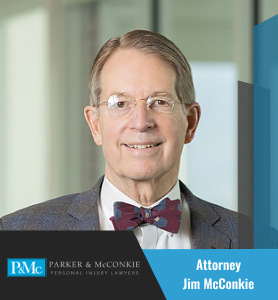
Spinal injuries are common in many accidents, especially in a car, motorcycle, bicycle, pedestrian, or construction accidents. Spinal injuries include injuries to the spinal cord, discs, joints, and vertebrae. The spinal cord is a column of nerves that runs up and down within the vertebrae. The spinal discs and joints connect each of the vertebrae. Nerve roots branch out from the spinal cord and run through openings in the vertebrae. These openings are called foramina. Frequently, trauma to the spinal column will result in “foraminal narrowing,” which causes compression on the nerve roots. In more severe cases, the narrowing can occur within the spinal column leading to spinal cord compression.
The spinal cord is divided into the following sections:
When nerves in the neck are pinched, you can experience numbness, tingling, or pain in the neck, trapezoid, shoulders, arms, or hands.
When nerves in the mid-back are pinched, you can experience pain or other symptoms in the upper back, chest, or belly.
When nerves in your lower back are pinched, you will experience pain or other symptoms in your back, thighs, calves, and feet.
Injuries to intervertebral discs are among the most common kinds of spinal injuries, where the discs have cushions that sit between each vertebra. Inside the discs is a jelly-like substance. If the disc is torn during trauma, the cushion can tear, and the jelly can leak. The leaking jelly can leak outside the disc and irritate the nerve or partially leak and harden within the disc.
The hardened jelly can then push on the nerve roots, causing:
Disc injuries are typically classified as herniations, protrusions, annular tears/fissures, and bulges.
Spinal injuries are diagnosed with imaging, including X-rays, CT scans, MRIs, and sometimes arthroscopy and ultrasound.
Table of Contents
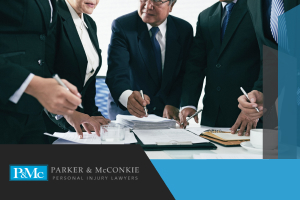
At Parker & McConkie, our Spinal Cord Injury Lawyers are willing to aid you with your legal matter. Here are some reasons why you should choose our Utah spinal cord attorneys:
• We offer free case consultations.
• You pay nothing unless we win compensation for you.
• We have a track record of success.
• We are available 24/7 to answer your concerns.
• We are comprised of trial lawyers with years of experience.
• We can obtain medical attention for our clients.
• We can deal with insurance firms on our client’s behalf.
When an accident occurs unexpectedly, you may feel overwhelmed and alone. Our goal is to alleviate as much stress as possible from your life so you can concentrate on your recovery. We can jump into your shoes and take on many of your responsibilities right away so that you will receive your maximum compensation. We won’t stop until you’ve been appropriately compensated for your damages and losses.
A spinal cord injury damages any part of the spinal cord or nerves at the end of the spinal canal (cauda equina). This often causes permanent changes in strength, sensation, and other body functions below the injury site.
If you’ve recently suffered a spinal cord injury, it may appear that everything in your life has been altered. You may experience mental, emotional, and social consequences from your injuries.
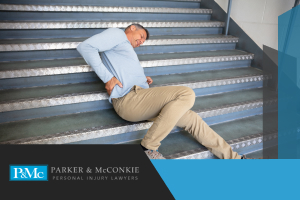
Spinal cord injuries can occur as a result of a variety of factors, including:
1. Car accident
2. Slip and fall
4. Medical malpractice
5. Sports injury
6. Defective products
7. Assaults and violence
Our Utah Spinal Cord Injury Attorneys are aware of the several types of lawsuits that might come from a spinal cord injury, especially those alleging carelessness or faulty products.
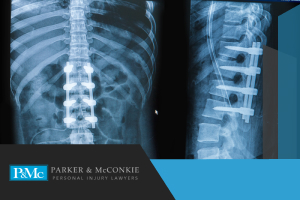
There are various spinal cord injuries. The majority of spinal cord injuries fall into one of two categories:
When the spinal cord is damaged, it is a “complete spinal cord injury,” where mainly the area below the injury cannot communicate with the brain. As a result, the victim’s motor and nerve functions have been compromised, and feeling and movement will be lost entirely below the injury.
If some degree of motion and sensory function remains after an injury, you’ve suffered incomplete spinal cord injury. It can still deliver the message to the brain via the spinal cord. The severity of the spinal cord injury is the sole determinant of mobility. Five types of injuries fall into this category:
These are the most frequent type of spinal cord injury; it usually lasts only a few days and heals quickly.
Paralysis caused by a spinal cord injury can also be referred to as:
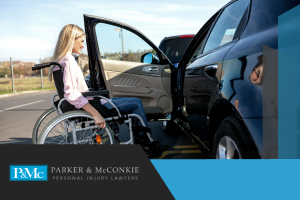
As swelling and bleeding occur in or around the spinal cord, some symptoms of a spinal cord injury may appear immediately, while others may appear later. The following are some of the symptoms of spinal cord injuries:
• Pain and numbness;
• Loss of mobility;
• Unable to detect pressure, heat, or cold;
• Unable to walk or move the extremities;
• Loss of sensation in the arm, chest, or legs;
• Excessive reflexes and spasms are prevalent;
• Loss of control of the bladder and bowels;
• Muscle deterioration or full loss of function;
• Breathing difficulties requiring the use of a ventilator;
• Loss or disruption of sexual function;
• Burning pain.
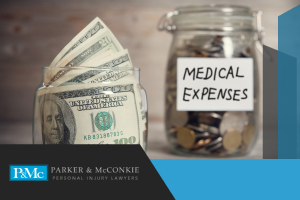
If you are unable to work, you may be entitled to financial compensation. Because spinal cord injury can be permanent damage, your compensation should be sufficient to cover you for the rest of your life. Though each case is different, victims with spinal cord injuries can usually seek fair compensation for the following:
Victims of spinal cord injuries may face insurmountable medical bills that can last a lifetime. They may be entitled to receive damages for their medical expenses.
Those who suffered a spinal cord injury are mostly unable to work. We seek remuneration for lost wages in the future and diminished earning ability.
After a spinal cord injury, the pain and suffering leave enduring emotional scars. When faced with mounting medical bills and the inability to work and earn a living, victims often realize that their normal life will never be the same.
If a spinal cord injury causes death, the victim’s spouse or family may be eligible to bring a wrongful death case to recover damages such as medical bills, lost wages, mental distress, and other losses.
Our Utah personal injury lawyers handle cases in a wide range of practice areas. They are ready to assist you in recovering the compensation and medical care you deserve for your spinal cord injuries. We offer free case evaluation if you or someone you care about has suffered a significant spine or back injury.
A spinal cord injury occurs when the spinal cord is damaged, resulting in a loss of function, such as mobility or sensation. It might be partial or total, resulting in complete or partial loss of motion and feeling.
Other types of back injuries are not the same as spinal cord injuries. Ruptured disks, spinal stenosis, and pinched nerves are possible back ailments. If only the bones are broken, it can break a person’s back or neck without causing a spinal cord injury.
Through the process known as workers’ compensation, you will be paid for things like lost wages and medical expenses.
While workers’ compensation disqualifies you from suing your company, it does give you the right to file a personal injury lawsuit against any third parties who may have contributed to your injury via negligence.
Proving that a healthcare professional did not apply a reasonable degree of care and that medical malpractice might have been done hence breaching his profession’s standard of care necessitates much proof and data to back up your allegation.
You’ll need medical records that show your spinal cord injury case while also implying that the breach of the standard of care was the cause of your spinal cord injury. You will also need a medical expert, or experts, to testify on your behalf, declaring that the doctor at fault did indeed diverge from what a reasonable physician in the same situation would do.
If you have been harmed due to someone else’s negligence, a Utah spinal cord attorney can assist you in gathering information and evidence that may be critical to the success of your spinal cord injury claim. If it comes to the success of your claim, gathering any evidence you can at the scene of the accident is critical. The more pieces of evidence you have, the better. Nonetheless, any evidence is preferable to none. Here are some instances of proper evidence:
Spinal cord injuries are among the most severe injuries. Obtaining compensation for the damages caused by a spinal cord injury can be complex and time-consuming. That is why you must hire a Utah personal injury lawyer for your legal claims! We at Parker & McConkie have handled cases involving spinal cord injuries similar to yours. We can provide you with the knowledge and resources you need to deal with various unexpected scenarios, seek justice, and obtain the fair compensation you deserve.
A skilled Utah Spinal Cord Injury Attorney can fair the competition, ensuring that you are not manipulated and that your court case is handled seriously.
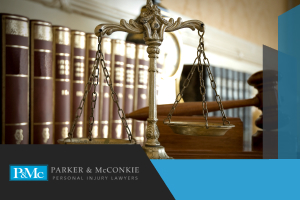
Parker & McConkie understands the rules governing personal injury in Utah, particularly spinal cord injuries. We can bring some relief to your family by getting compensation for your losses. You have the right to seek compensation to pay your current and future medical expenses, as well as your pain and suffering, lost quality of life, lost income, and other expenditures.
To represent clients, we provide competent legal counsel and use the law, rules, and processes to get the best possible results.
We provide free consultations to discuss your legal options if you or a loved one has suffered a spinal cord injury. Our Utah Spinal Cord Injury Lawyers will deal with the insurance companies on your behalf and push your case as much as it needs to go so you can concentrate on living your life. Call us at (801) 845-0440 today.
Call 801-845-0440 to get in touch with a member of our firm after your accident. We can review your case for free!



